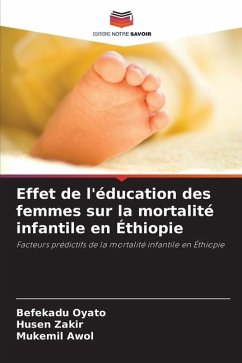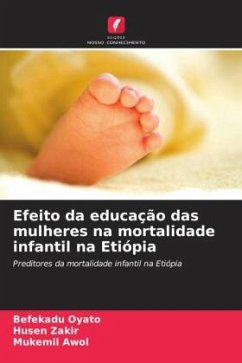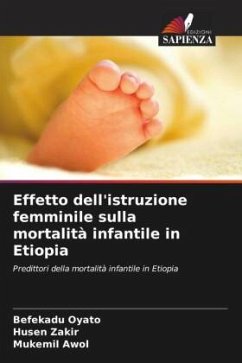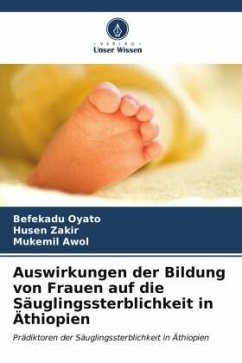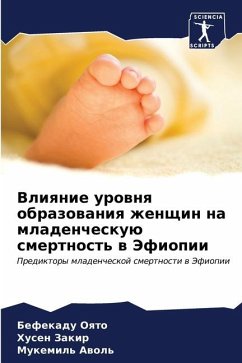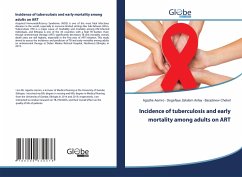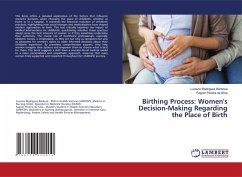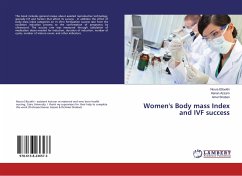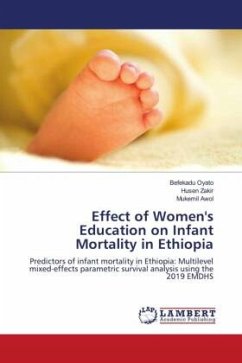
Effect of Women's Education on Infant Mortality in Ethiopia
Predictors of infant mortality in Ethiopia: Multilevel mixed-effects parametric survival analysis using the 2019 EMDHS
Versandkostenfrei!
Versandfertig in 6-10 Tagen
29,99 €
inkl. MwSt.

PAYBACK Punkte
15 °P sammeln!
Besides fulfilling the MDG 4 of lowering under-five mortality, Ethiopia is on a course toward achieving the SDG of ending preventable child mortality. Despite this, recent data from the nation showed 43 infant deaths for every 1,000 live births. Thus, this study aimed to identify the time to death and its predictors among Ethiopian infants by conducting a retrospective cohort study using the 2019 Ethiopian Mini-Demographic and Health Survey (EMDHS) data set. Women's current pregnancy status, family size, age of women, previous birth interval, place of delivery, and mode of delivery were the si...
Besides fulfilling the MDG 4 of lowering under-five mortality, Ethiopia is on a course toward achieving the SDG of ending preventable child mortality. Despite this, recent data from the nation showed 43 infant deaths for every 1,000 live births. Thus, this study aimed to identify the time to death and its predictors among Ethiopian infants by conducting a retrospective cohort study using the 2019 Ethiopian Mini-Demographic and Health Survey (EMDHS) data set. Women's current pregnancy status, family size, age of women, previous birth interval, place of delivery, and mode of delivery were the significant individual-level predictors of infant mortality. At the community level, women's education was the only statistically significant predictor of infant death. Therefore, infants born to mothers from communities with low maternal secondary and higher education had a higher mortality risk than infants born to mothers from communities with high maternal secondary and higher education. Healthcare programs should put a strong emphasis on efforts to space out births and make institutional delivery services more readily accessible to mothers in Ethiopia to address infant mortality challenges.



